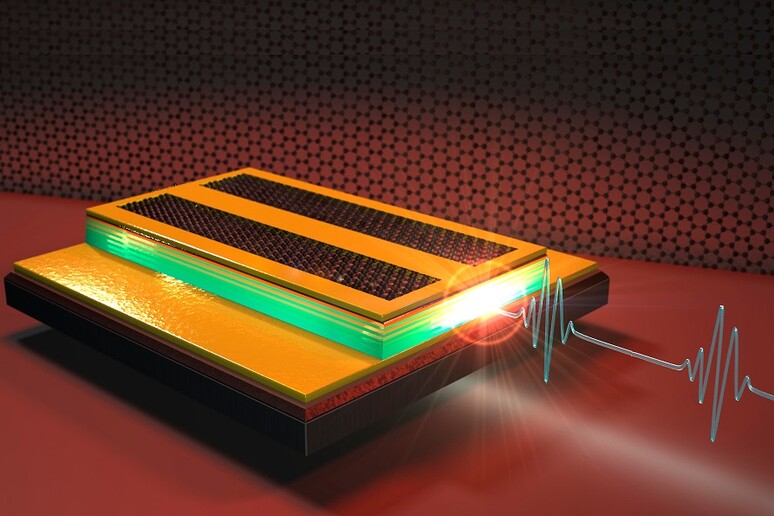Scientists have come up with an innovative miniature, compact and inexpensive semiconductor laser capable of generating short pulses of radiation at terahertz frequencies. The discovery, published in Nature Photonics by the European research team coordinated by Miriam Serena Vitiello of the National Research Council’s Nanoscience Institute in Pisa, has a potential for use in a wide range of applications, from diagnostics to climate science and ultrafast communications.
"For a long time it was thought that the very nature of the emission mechanism of semiconductor lasers prevented the generation of short pulses," says Vitello, CNR-Nano research executive and lead author of the study. "To overcome this limitation, we exploited an innovative device architecture, which integrates localized strips of graphene embedded in a very compact semiconductor laser, known as a quantum cascade laser,” she said.
This resulted in self-generated pulses lasting 4 picoseconds and ensuring an accuracy that allows many applications, including in climate and environmental and quantum sciences. Miniature terahertz lasers could also replace the bulky systems currently in use in various fields such as biomedical imaging, security controls, quality control and cultural heritage, while also having greater accuracy of analysis.
Riproduzione riservata © Copyright ANSA













